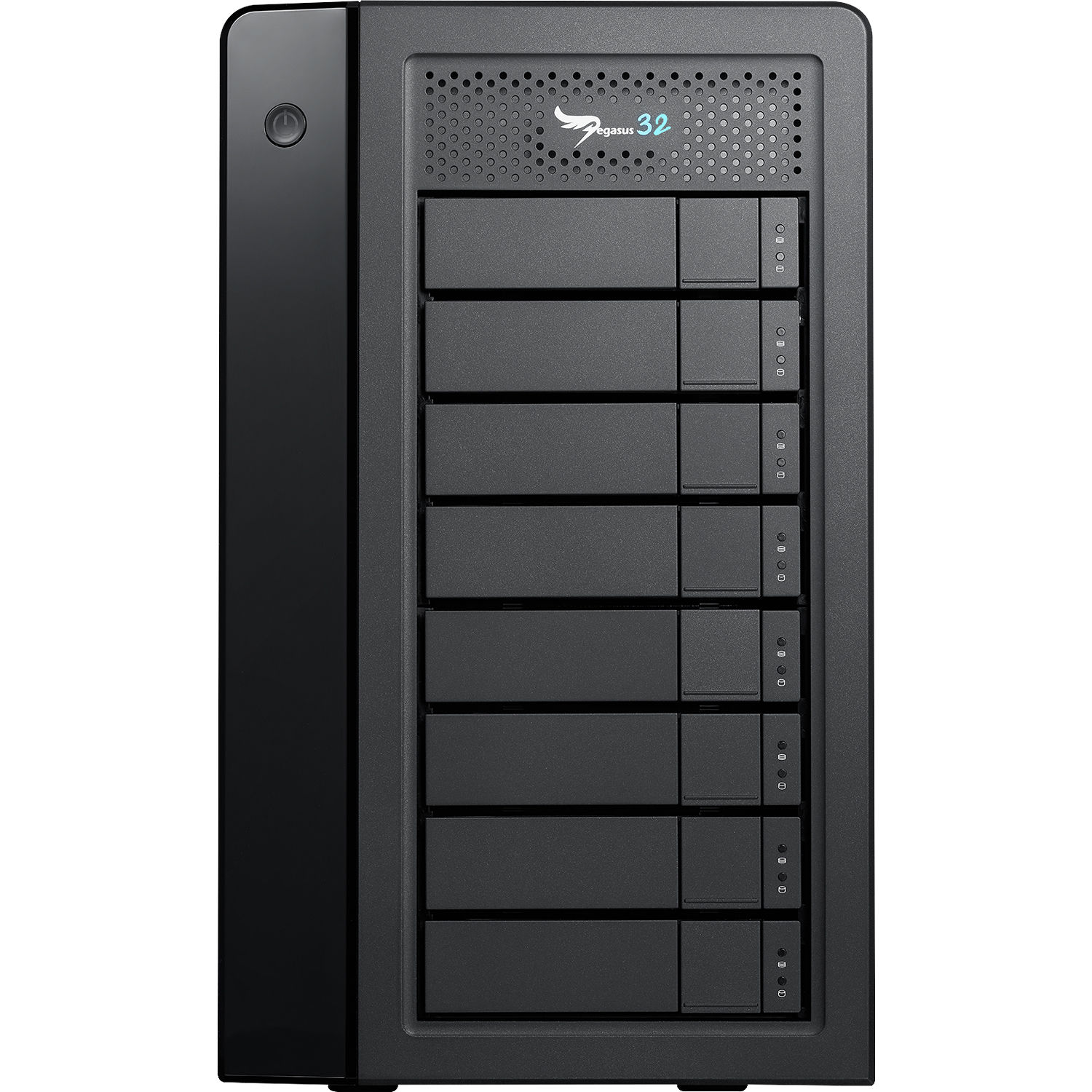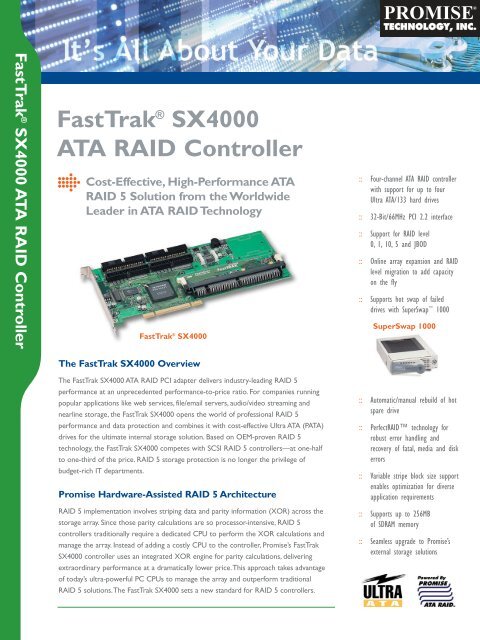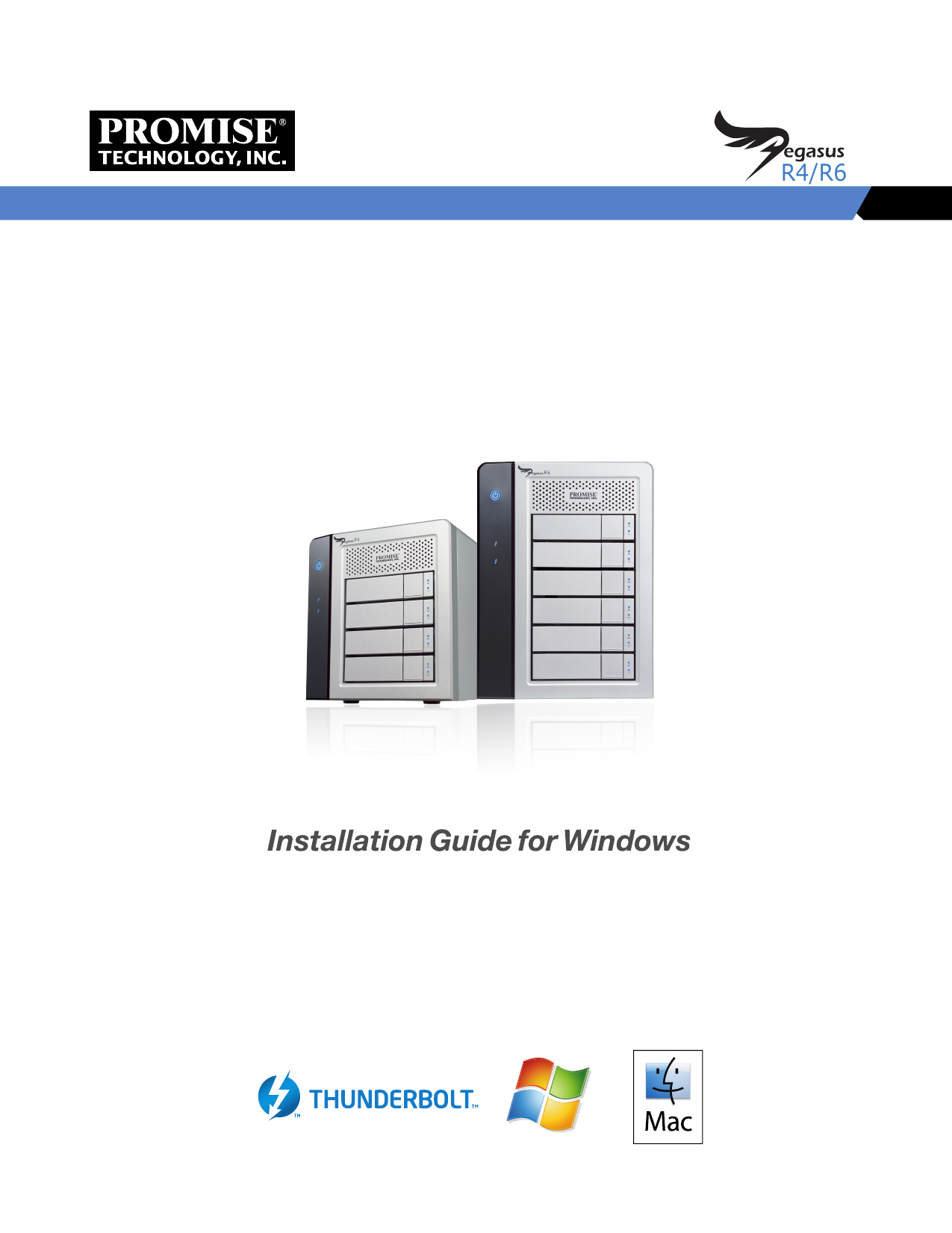
* RECOMMENDED * HPE Smart Array Gen10 Controller Driver for Windows Server 2012 R2 and Windows Server 2016 By downloading, you agree to the terms and conditions of the Hewlett Packard Enterprise Software License Agreement.
Note: Some software requires a valid warranty, current Hewlett Packard Enterprise support contract, or a license fee. | Type: | Driver - Storage Controller | | Version: | 100.52.1.64(5 Feb 2018) | | Operating System(s): | | Microsoft Windows Server 2012 R2 | | Microsoft Windows Server 2016 |
Microsoft Windows 10 (64-bit) | | Multi-part download | | File name: | cp032545.compsig (2.0 KB) | | File name: | cp032545.exe (826 KB) |
This component provides support for the HPE Smart Array Gen10 E-series and P-series controllers Upgrade Requirement:
Recommended - HPE recommends users update to this version at their earliest convenience. - Enhanced controller cache management when doing an OS shutdown, hibernate, or sleep.
- Enabled PCI Passthrough on Hyper-V.
To ensure the integrity of your download, HPE recommends verifying your results with the following SHA-256 Checksum values: | 8a1745bd7baa6a2be5c1f7463268e55751d82698c6f3ab3c115e8e0223a4f056 | cp032545.compsig | | e5ea03f105086191f448fb3e18460d30b9157929572e3bd0578ff5381265a8c2 | cp032545.exe |
Reboot Requirement:
Reboot is required after installation for updates to take effect and hardware stability to be maintained. Installation:
Download the Smart Component to a directory on your hard drive and change to that directory. The downloaded file is a self-extracting executable with a filename based on the Smart Component Number.
From that drive and directory, execute the downloaded file. End User License Agreements:
HPE Software License Agreement v1
Hewlett-Packard End User License Agreement
Upgrade Requirement:
Recommended - HPE recommends users update to this version at their earliest convenience. Version:106.190.4.1062 (21 Dec 2020) Upgrade Requirement:
Recommended - HPE recommends users update to this version at their earliest convenience. This release provides the following fixes: The driver was not setting the feature bit to inform the controller to return a unique WWN ID per SATA drive via Inquiry VPD 0x83 rather then returning WWN ID per SAT drive port. While executing HCK CHAOS test, SmartPQI driver crashes with bugcheck 0x7A (KERNEL_DATA_INPAGE_ERROR). While rebooting, the SmartPQI driver crashes with bugcheck 0xD1 An issue where Sleep test causes the SmartPQI driver to trigger a bugcheck 0xD1. Fixed an issue while executing driver disable/reinstall, the SmartPQI driver crashes with bugcheck 0xD1
Fixed an issue where the application hangs due to lost command. When issuing 'Get-Disk' from Powershell, the command would eventually hang indefinitely. Fixed the registry lookup for determining where I/O is completed was using the string ' SubmitViaStartIo ' instead of ' CompleteIoInDpc '. Fixed an issue where while executing sleep, the windows SmartPQI driver crashes with bugcheck 0x7E. Fixed an issue where the system would BSOD when doing unnecessary initialization of the multi-tag table after declaring controller lockup. Fixed an issue that causes a DRIVER_POWER_STATE_FAILURE BSOD
Added an enhancement to fix the stale Drive fi rm ware version returned by a Power Shell command. (11 Aug 2020) Upgrade Requirement:
Recommended - HPE recommends users update to this version at their earliest convenience. Minor fixes required for functionality of FW 3.0 Upgrade Requirement:
Recommended - HPE recommends users update to this version at their earliest convenience. Smartpqi driver 106.178.0.1009 supports the latest versions of Microsoft Windows OS environments and it is recommended for used with HPE Gen10 Smart Array controllers FW 3.0 (20 Dec 2019) Upgrade Requirement:
Recommended - HPE recommends users update to this version at their earliest convenience. - When executing a “PCS-E2Launch” the system cause stop responding due to the internal controller command accessing the cmdinfo SRB.
(9 Sep 2019) Upgrade Requirement:
Recommended - HPE recommends users update to this version at their earliest convenience. Fix the following issues: - System may become unresposive during initialization of s DC OFF/ON test
- Corrected a wrong character displayed by Device Manager in a Japanese environment
- Issue where a PQI reset was sent incorrectly to the controller causing the PNP WHQL test case to fail
- Data could become inaccesible when a reboot is executed while the controller is in dump mode because the Power SRB completed before the cache flush
(2 Apr 2019) Upgrade Requirement:
Recommended - HPE recommends users update to this version at their earliest convenience. - Improved integration with Smart Update Manager
(27 Nov 2018) Upgrade Requirement:
Recommended - HPE recommends users update to this version at their earliest convenience.
Note: If version 100.62.0.64 was previously installed, then it is not necessary to upgrade to version 100.62.0.64 (A) Added support for Windows Server 2019. (26 Jun 2018) Upgrade Requirement:
Recommended - HPE recommends users update to this version at their earliest convenience. - Windows 2016 fails cluster validation test.
- Windows “Removal Policy” incorrectly set to TRUE.
(5 Feb 2018) Upgrade Requirement:
Recommended - HPE recommends users update to this version at their earliest convenience. - Enhanced controller cache management when doing an OS shutdown, hibernate, or sleep.
- Enabled PCI Passthrough on Hyper-V.
(20 Dec 2017) Upgrade Requirement:
Recommended - HPE recommends users update to this version at their earliest convenience. Initial driver release for HPE P/E-Class SR Gen10 controllers. - Added support for Windows 10 operating system.
(25 Sep 2017) Upgrade Requirement:
Recommended - HPE recommends users update to this version at their earliest convenience. Added support for the following Gen10 servers: - HPE ProLiant XL190r Gen10 Server
- HPE ProLiant XL170r Gen10 Server
- HPE ProLiant DL180 Gen10 Server
- HPE ProLiant DL160 Gen10 Server
- HPE ProLiant DL580 Gen10 Server
- HPE ProLiant ML110 Gen10 Server
- HPE ProLiant ML350 Gen10 Server
- HPE ProLiant XL450 Gen10 Server
- HPE ProLiant DL120 Gen10 Server
(12 Jul 2017) Upgrade Requirement:
Recommended - HPE recommends users update to this version at their earliest convenience. - Initial driver release for HPE P/E-Class SR Gen10 controllers.
| Type: | Driver - Storage Controller | | Version: | 100.52.1.64(5 Feb 2018) | | Operating System(s): | | Microsoft Windows 10 (64-bit) | | Microsoft Windows Server 2012 R2 | | Microsoft Windows Server 2016 |
|
DescriptionThis component provides support for the HPE Smart Array Gen10 E-series and P-series controllers EnhancementsUpgrade Requirement:
Recommended - HPE recommends users update to this version at their earliest convenience. - Enhanced controller cache management when doing an OS shutdown, hibernate, or sleep.
- Enabled PCI Passthrough on Hyper-V.
Installation InstructionsTo ensure the integrity of your download, HPE recommends verifying your results with the following SHA-256 Checksum values: | 8a1745bd7baa6a2be5c1f7463268e55751d82698c6f3ab3c115e8e0223a4f056 | cp032545.compsig | | e5ea03f105086191f448fb3e18460d30b9157929572e3bd0578ff5381265a8c2 | cp032545.exe |
Reboot Requirement:
Reboot is required after installation for updates to take effect and hardware stability to be maintained. Installation:
Download the Smart Component to a directory on your hard drive and change to that directory. The downloaded file is a self-extracting executable with a filename based on the Smart Component Number.
From that drive and directory, execute the downloaded file. Release NotesEnd User License Agreements:
HPE Software License Agreement v1
Hewlett-Packard End User License Agreement
Upgrade Requirement:
Recommended - HPE recommends users update to this version at their earliest convenience. Revision HistoryVersion:106.190.4.1062 (21 Dec 2020) Upgrade Requirement:
Recommended - HPE recommends users update to this version at their earliest convenience. This release provides the following fixes: The driver was not setting the feature bit to inform the controller to return a unique WWN ID per SATA drive via Inquiry VPD 0x83 rather then returning WWN ID per SAT drive port. While executing HCK CHAOS test, SmartPQI driver crashes with bugcheck 0x7A (KERNEL_DATA_INPAGE_ERROR). While rebooting, the SmartPQI driver crashes with bugcheck 0xD1 An issue where Sleep test causes the SmartPQI driver to trigger a bugcheck 0xD1. Fixed an issue while executing driver disable/reinstall, the SmartPQI driver crashes with bugcheck 0xD1
Fixed an issue where the application hangs due to lost command. When issuing 'Get-Disk' from Powershell, the command would eventually hang indefinitely. Fixed the registry lookup for determining where I/O is completed was using the string ' SubmitViaStartIo ' instead of ' CompleteIoInDpc '. Research in motion driver download windows 7. Fixed an issue where while executing sleep, the windows SmartPQI driver crashes with bugcheck 0x7E. Fixed an issue where the system would BSOD when doing unnecessary initialization of the multi-tag table after declaring controller lockup. Fixed an issue that causes a DRIVER_POWER_STATE_FAILURE BSOD
Added an enhancement to fix the stale Drive fi rm ware version returned by a Power Shell command. (11 Aug 2020) Upgrade Requirement:
Recommended - HPE recommends users update to this version at their earliest convenience. Minor fixes required for functionality of FW 3.0 Upgrade Requirement:
Recommended - HPE recommends users update to this version at their earliest convenience. Smartpqi driver 106.178.0.1009 supports the latest versions of Microsoft Windows OS environments and it is recommended for used with HPE Gen10 Smart Array controllers FW 3.0 (20 Dec 2019) Upgrade Requirement:
Recommended - HPE recommends users update to this version at their earliest convenience. - When executing a “PCS-E2Launch” the system cause stop responding due to the internal controller command accessing the cmdinfo SRB.
(9 Sep 2019) Upgrade Requirement:
Recommended - HPE recommends users update to this version at their earliest convenience. Fix the following issues: - System may become unresposive during initialization of s DC OFF/ON test
- Corrected a wrong character displayed by Device Manager in a Japanese environment
- Issue where a PQI reset was sent incorrectly to the controller causing the PNP WHQL test case to fail
- Data could become inaccesible when a reboot is executed while the controller is in dump mode because the Power SRB completed before the cache flush
(2 Apr 2019) Upgrade Requirement:
Recommended - HPE recommends users update to this version at their earliest convenience. - Improved integration with Smart Update Manager
(27 Nov 2018) Upgrade Requirement:
Recommended - HPE recommends users update to this version at their earliest convenience.
Note: If version 100.62.0.64 was previously installed, then it is not necessary to upgrade to version 100.62.0.64 (A) Added support for Windows Server 2019. (26 Jun 2018) Upgrade Requirement:
Recommended - HPE recommends users update to this version at their earliest convenience. - Windows 2016 fails cluster validation test.
- Windows “Removal Policy” incorrectly set to TRUE.
(5 Feb 2018) Upgrade Requirement:
Recommended - HPE recommends users update to this version at their earliest convenience. - Enhanced controller cache management when doing an OS shutdown, hibernate, or sleep.
- Enabled PCI Passthrough on Hyper-V.
(20 Dec 2017) Upgrade Requirement:
Recommended - HPE recommends users update to this version at their earliest convenience. Initial driver release for HPE P/E-Class SR Gen10 controllers. - Added support for Windows 10 operating system.
(25 Sep 2017) Upgrade Requirement:
Recommended - HPE recommends users update to this version at their earliest convenience. Added support for the following Gen10 servers: - HPE ProLiant XL190r Gen10 Server
- HPE ProLiant XL170r Gen10 Server
- HPE ProLiant DL180 Gen10 Server
- HPE ProLiant DL160 Gen10 Server
- HPE ProLiant DL580 Gen10 Server
- HPE ProLiant ML110 Gen10 Server
- HPE ProLiant ML350 Gen10 Server
- HPE ProLiant XL450 Gen10 Server
- HPE ProLiant DL120 Gen10 Server
(12 Jul 2017) Upgrade Requirement:
Recommended - HPE recommends users update to this version at their earliest convenience. - Initial driver release for HPE P/E-Class SR Gen10 controllers.
|
|
Legal Disclaimer: Products sold prior to the November 1, 2015 separation of Hewlett-Packard Company into Hewlett Packard Enterprise Company and HP Inc. may have older product names and model numbers that differ from current models. |
|
Promise Hard Disk Controller Driver Download For Windows

-->
A boot-start driver is a driver for a device that must be installed to start the Microsoft Windows operating system. Most boot-start drivers are included 'in-the-box' with Windows, and Windows automatically installs these boot-start drivers during the text-mode setup phase of Windows installation. If a boot-start driver for a device is not included 'in-the-box' with Windows, a user can install an additional vendor-supplied boot-start driver for the device during text-mode setup.
Reset Windows Password: load additional IDE, SATA, SCSI, RAID, NVME drivers. If when the application started it was unable to detect one or several hard disk drives, you will most likely need to install a driver for that device. In the main window, on the task list, select 'Load IDE/SATA/SCSI/RAID/NVME driver' and go to the driver installation.
To install a device that is required to start Windows, but whose driver is not included with the operating system, a user must do the following:


Insert the USB Disk into your locked/target computer. Reboot your locked/target computer from the new burned Lazesoft WinPE boot disk; On the home page of Lazesoft Recovery Suite boot disk, click Drivers, after boot disk is loaded. Load the driver file,.inf, from the the extracted the RAID controller driver files folder. Select Search automatically for updated driver software. Select Update Driver. If Windows doesn't find a new driver, you can try looking for one on the device manufacturer's website and follow their instructions. Reinstall the device driver. In the search box on the taskbar, enter device manager, then select Device Manager.
Install the device hardware and turn on the computer.
Begin your Windows installation (run the Windows setup program). During the text-mode phase of the installation (at the beginning of the installation), Windows displays a message that indicates that you can press a specific Fn key to install a boot-start driver.
When Windows displays this message, press the specified Fn key to install the boot-start driver and then insert a boot-start driver distribution disk.
Note This procedure demonstrates how you can install a driver that is not included 'in-the-box' with Windows. Do not use this procedure to replace or update a driver that is included with Windows. Instead, wait until Windows starts and use Device Manager to perform an 'update driver' operation on the device.
When Windows fails to start, certain error messages that are displayed can indicate that a boot-start driver is missing. The following table describes several error messages and their possible causes.
| Error message | Possible cause |
|---|
Inaccessible boot device | The boot disk is a third-party mass-storage device that requires a driver that is not included with Windows. |
Setup could not determine your machine type | A new HAL driver is required. This error does not occur on most machines, but it might occur on a high-end server. |
Setup could not find any hard drives in your computer | The required boot device drivers for the hard drives are not loaded. |
Boot-Start Driver Distribution Disk
Promise Hard Disk Controller Driver Download For Windows Xp
A boot-start driver distribution disk is a medium, such as a floppy disk or USB flash drive, that contains a TxtSetup.oem file and the related driver files. The TxtSetup.oem file is a text file that contains a list of hardware components, a list of files on the distribution disk that will be copied to the system, and a list of registry keys and values that will be created. A sample TxtSetup.oem file is provided with the Windows Driver Kit (WDK), under the src directory of the WDK. For details about the contents of a TxtSetup.oem file, see TxtSetup.oem File Format.
The following requirements and recommendations apply to platform-specific and cross-platform distributions disks:
Platform-specific distribution disks (Windows Server 2003 and earlier)
Windows requires a platform-specific distribution disk for each platform that a driver supports. A platform-specific distribution disk contains one TxtSetup.oem file and the related driver files. The TxtSetup.oem file must be located in the root directory of the distribution disk.
Cross-platform and platform-specific distribution disks (Windows Server 2003 Service Pack 1 (SP1) and later versions)
Windows supports cross-platform distribution disks that contain two or more platform-specific TxtSetup.oem files and the related driver files.
To distinguish between platforms on a cross-platform distribution disk, use the platform directories that are listed in the following table.
| Platform | Platform directory | Default directory |
|---|
x86-based | A:i386 | A: |
Itanium-based | A:ia64 | A: |
x64-based | A:amd64 | A: |

Promise Hard Disk Controller Driver Download For Windows 8.1
On a cross-platform distribution disk, Windows uses the platform-specific TxtSetup.oem file that is located in the platform directory that corresponds to the platform on which Windows is running. If a corresponding platform directory that contains a platform-specific TxtSetup.oem file does not exist, Windows uses the TxtSetup.oem file in the default directory, if one is present.
Promise Hard Disk Controller Driver Download For Windows 7
Windows also supports platform-specific distribution disks. A platform-specific distribution disk contains one platform-specific TxtSetup.oem file and the related driver files. The TxtSetup.oem file must be located either in its corresponding platform directory, as is done for cross-platform distribution disks, or in the default directory of the distribution disk.
The driver files for a given platform on a cross-platform distribution disk or on a platform-specific distribution disk must be located relative to the directory that contains the platform-specific TxtSetup.oem file.
Promise Hard Disk Controller Driver Download For Windows 10

Tip Although not required, we recommend that a TxtSetup.oem file always be placed in a corresponding platform directory. Using platform directories eliminates the possibility that Windows might attempt to use a TxtSetup.oem file that is incompatible with the platform on which Windows is running. For example, if a user attempts an unattended installation on a platform with a distribution disk that does not contain a corresponding platform directory, Windows cannot determine whether the TxtSetup.oem file in the default directory is compatible with the platform. If a driver fails to load because the driver is incompatible with the platform, Windows displays an error message and terminates the unattended installation.

 -->
-->


